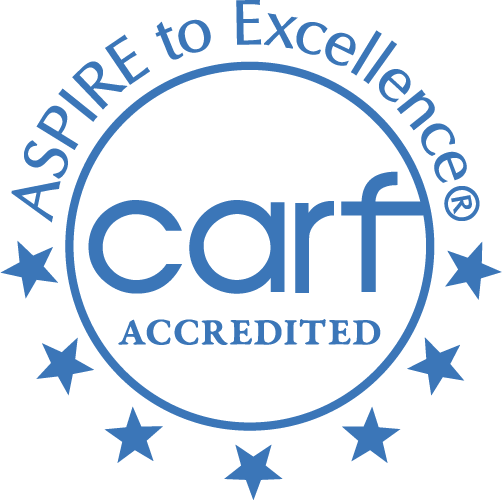Skip To Rehab Listing
Treatment Service Settings and Treatment Methods
Sierra Vista's many treatment programs, some of which are laid out below, address a problem that is widespread in cities across the United States: drug and alcohol abuse. These rehabs fight this challenge locally by offering locations and provisions that are suitable for clients within the area. These settings include: detoxification centers, short term treatment centers, outpatient hospital programs, long term addiction treatment facilities, inpatient drug and alcohol rehab centers.
Substance abuse treatment centers use many approaches, from long-established practices to newer methods such as: brief intervention approach, motivational interviewing, trauma therapy, vocational rehabilitation services, cognitive/behavior therapy, cognitive/behavior therapy. The outcome is a range of services that clear the path to attainable sustained recovery for numerous clients.
Special Programs for Substance Abuse Offered by Rehab Facilities
Those struggling with drug or alcohol use often require personalized assistance to get off drugs and alcohol. That is why alcohol and drug treatment programs in Sierra Vista deliver specialized resources that help clients within their particular situations. Some of these services are listed here: child care for clients children, persons who have experienced sexual abuse, housing services, substance abuse education, clients with HIV/AIDS, co-occurring mental and substance abuse disorders.
Rehab Payment Options in Sierra Vista, Arizona
Patients are faced with different financial conditions, which is the reason addiction treatment centers provide several payment alternatives, including: private insurance, cash or self-payment, sliding fee scale, payment assistance, access to recovery (atr) voucher, state corrections or juvenile justice funds.
Funding should never be a hurdle to substance abuse recovery. Rehabilitation programs direct clients toward the payment options that help their individual budgetary needs.
With a variety of facilities, programs, resources, approaches and payment options, Sierra Vista provides patients several options when it comes to seeking recovery from substance abuse.
Commonly Asked Questions about Addiction and Treatment
Can alcohol withdrawal be fatal?
Yes, alcohol withdrawal can be fatal in severe cases, which is why it should always be managed under the supervision of healthcare professionals. This is especially true for individuals who have been drinking heavily for a long period of time or who have a history of severe withdrawal symptoms.
The most serious form of alcohol withdrawal is called delirium tremens (DTs), which occurs in approximately 5% of patients undergoing withdrawal. It typically starts 48 to 72 hours after the last drink, and symptoms can include severe confusion, hallucinations, high blood pressure, fever, heavy sweating, and rapid heartbeat. In addition to these, seizures can occur, which add to the risk.
Delirium tremens is a medical emergency and can be life-threatening if not treated promptly. Mortality rates without treatment are estimated to be as high as 35%, but with appropriate treatment, this rate drops to 5-15%.
Even less severe cases of alcohol withdrawal can be dangerous because they can lead to dehydration, severe vomiting, or other complications. Furthermore, withdrawal symptoms can make it difficult for an individual to maintain abstinence from alcohol, increasing the risk of a potentially dangerous relapse.
How does a person become addicted to drugs and alcohol?
Addiction to drugs and alcohol is a complex process involving a combination of genetic, environmental, psychological, and social factors. While not everyone who uses drugs or alcohol will become addicted, certain factors can increase an individual's vulnerability to addiction. Some key factors contributing to addiction include:
- Genetic predisposition: Genetics play a significant role in addiction, accounting for an estimated 40-60% of an individual's vulnerability. People with a family history of addiction may be more susceptible to developing a substance use disorder.
- Environmental influences: A person's environment can significantly impact their likelihood of developing an addiction. Factors such as exposure to drugs or alcohol, peer pressure, low socioeconomic status, and lack of parental supervision can contribute to substance use and potential addiction.
- Early initiation: Research indicates that individuals who begin using drugs or alcohol at an early age are at a higher risk of developing addiction later in life. Early exposure to substances can disrupt normal brain development, making it more challenging to resist addictive behaviors.
- Psychological factors: Mental health disorders, such as depression, anxiety, or trauma-related disorders, can increase the risk of addiction. Individuals may turn to drugs or alcohol as a coping mechanism for managing emotional distress, which can lead to dependence and addiction.
- Social factors: Social isolation, lack of support networks, or unhealthy relationships can contribute to addiction. Individuals may use drugs or alcohol to fill a void or establish connections with others, increasing their risk of developing a substance use disorder.
- Chronic use: Repeated exposure to drugs or alcohol can lead to physiological changes in the brain's reward and pleasure centers. Over time, these changes can result in the development of tolerance, dependence, and ultimately addiction.
- Route of administration: The method by which a substance is consumed can impact the likelihood of addiction. Faster-acting routes of administration, such as injecting, smoking, or snorting, can lead to a more rapid onset of pleasurable effects, increasing the risk of addiction.
Suicide risks from drug abuse among lgbtq+ youth
Substance abuse significantly increases the risk of suicide, particularly among vulnerable populations such as LGBTQ+ (lesbian, gay, bisexual, transgender, queer, and others) youth. This heightened risk stems from a combination of factors associated with both substance abuse and the unique challenges faced by LGBTQ+ youth. Here's a closer look at these factors:
Mental Health Disorders: Substance abuse often co-occurs with mental health disorders such as depression, anxiety, and bipolar disorder, which are known risk factors for suicide. LGBTQ+ youth experience these mental health conditions at higher rates than their heterosexual and cisgender peers, partially due to the minority stress they face.
Minority Stress: Minority stress refers to the chronic stress experienced by marginalized groups, including LGBTQ+ individuals. It can include experiences such as discrimination, stigma, bullying, and family rejection, which can increase feelings of hopelessness and contribute to both substance use and suicidal ideation.
Substance Use and Suicidal Behavior: Substance use can lead to increased impulsivity, decreased inhibition, and intensified feelings of despair, making a person more likely to attempt suicide. It can also exacerbate feelings of isolation and hopelessness, further increasing the risk.
Social Isolation: Many LGBTQ+ youth feel socially isolated, either because they are not out to their peers or because they face rejection after coming out. This isolation can lead to increased substance use and a higher risk of suicide.
Family Rejection: Family rejection related to an individual's sexual orientation or gender identity can lead to increased substance use and heightened suicide risk. LGBTQ+ youth who do not receive support from their families are particularly vulnerable.
Lack of Access to Mental Health Services: Many LGBTQ+ youth struggle to access mental health and substance use treatment services, which can help manage risk factors for suicide. Barriers to access can include lack of insurance, stigma, and a shortage of providers who offer LGBTQ+-inclusive care.
Intersectionality: LGBTQ+ youth who belong to other marginalized groups (e.g., racial/ethnic minorities) often face additional layers of discrimination and stress, which can further increase their risk of substance abuse and suicide.
Efforts to prevent suicide among LGBTQ+ youth include providing access to culturally competent mental health and substance use treatment, fostering supportive environments in schools and communities, and advocating for policies that protect LGBTQ+ youth from discrimination and harassment. It's also crucial to provide support for families of LGBTQ+ youth, as family acceptance has been shown to protect against suicide risk.













